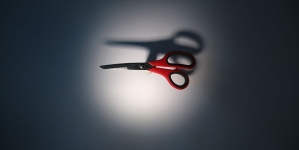-
Tips for becoming a good boxer - November 6, 2020
-
7 expert tips for making your hens night a memorable one - November 6, 2020
-
5 reasons to host your Christmas party on a cruise boat - November 6, 2020
-
What to do when you’re charged with a crime - November 6, 2020
-
Should you get one or multiple dogs? Here’s all you need to know - November 3, 2020
-
A Guide: How to Build Your Very Own Magic Mirror - February 14, 2019
-
Our Top Inspirational Baseball Stars - November 24, 2018
-
Five Tech Tools That Will Help You Turn Your Blog into a Business - November 24, 2018
-
How to Indulge on Vacation without Expanding Your Waist - November 9, 2018
-
5 Strategies for Businesses to Appeal to Today’s Increasingly Mobile-Crazed Customers - November 9, 2018
Big Data Or Bio Data?
How big is Big Data? Our capacity to store information has been doubling about every 40 months for the last 30 years! It’s so big the federal government has concluded the nation is underinvesting in the field and is looking for ways to improve their ability to manage, understand, and act upon the 1.2 zettabytes (1021) of electronic data generated each year. The Office of Science and Technology Policy wants to learn how to use those massive amounts of information to address health, energy, defense, and education in America.
Advertisement
Big Benefits
According to McKinsey, the predictions about the ROI from successfully manipulating Big Data are also big; 60% increase in operating margins for a retailer, $300 billion per year in value just from the efficiencies and quality improvements in US healthcare, $149 billion a year in administrative savings in the European Union, a $600 billion dollar market in services enabled by personal location data. Meanwhile, a most interesting counter current is forming just as our technological power appears transcendent:
“Human subtlety will never devise an invention more beautiful, more simple or more direct than does nature because in her inventions nothing is lacking, and nothing is superfluous”, said Leonardo da Vinci.
An example of this is the way scientists at FosmoMed, a Bay Area startup, are using the Big Data from 3.8 billion years of experimentation by nature to come up with an invention they affectionately call Maji. Maji, the Swahili word for water, is a lifesaver and game changer, an invention in which “nothing is lacking and nothing is superfluous”. A Maji looks like just another IV solutions bag until you notice it comes without the saline solution. Unlike current technology which has the sanitary saline solution in the bag when it’s shipped and transported, the Maji bag travels empty and thus weighs 1/16th as much as its competition.
Game Changer
That fact alone makes it a game changer in the IV solutions industry where the major pain points are associated with high shipping costs and short shelf life from the product being prone to puncture, leak, or the plastic leeching into the solution. That’s where not trying to “devise an invention more beautiful, more simple or more direct than nature” comes in. Former NASA Ames researcher, Dr. Sherwin Gormly, used an all natural, proven understanding called Forward Osmosis to solve the hydration challenge aboard the International Space Station and now, as Director of R&D for FosmoMed, is creating a revolution in IV solutions.
Advertisement
Dr. Gormly, who laughs a lot when he talks about his work, says, “The Maji’s magic is in its Biomimicry, which is what people are calling using the wisdom inherent in natural processes to help solve cutting edge problems in science, architecture and product design.




























